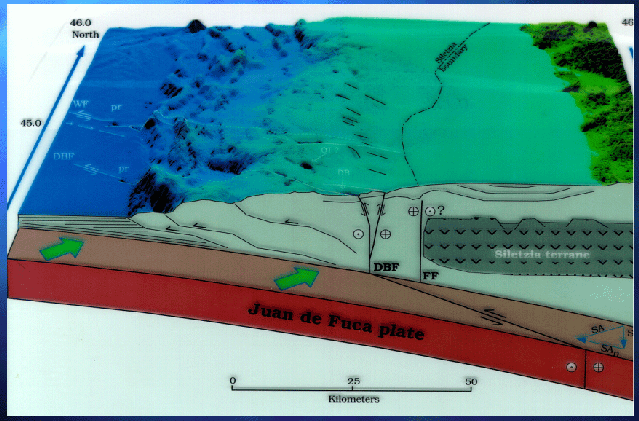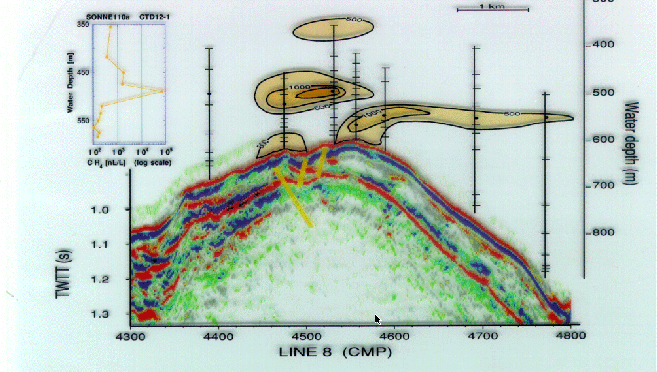
[ home port | lectures | labs | surf | email profs. ]

Main points of today's lecture:
Insights:
Have you thought about... (answers need not be submitted!)
The Deep Ocean contains abundant CO2 and O2, because these are easily dissolved in cold surface water that sinks to the ocean bottom from either the North or South Atlantic. O2 content controls the extent of oxidation of sediments arriving at the ocean floor. CO2 content controls the depth of the CCD (carbonate compensation depth), which determines how much carbonate is preserved on the ocean floor as sediments.
The temperature of bottom water formation determines how much CO2 can dissolve in water that sinks to the deep ocean. The rate of overturn of the oceans ("conveyor belt") determines the burial rate of C (carbon) from the atmosphere. Organic C (sinking from the surface waters as dead plants and animals) accumulates in the sediments at a rate dependent on the O2 content of the deep ocean.
Organic C in sediments is eventually reduced to methane (CH4) gas.
Methane migrates upward and is trapped near the sea floor as
frozen "gas hydrates" (methane combined with frozen water).


Large deposits of gas hydrates have been discovered recently along
the margin of OR and WA, where sediments are being scraped off the
subducting Juan de Fuca plate and added to the submarine part of North
America.

Sedimentary rocks
containing these frozen gas hydrates melt and bubble when they are
brought to the surface because of the higher temperature and lower
pressure compared with the sea floor.

It is a concern that massive amounts of gas hydrates (CH4) could be
liberated from the bottom sediments during either lower sea level (lower
pressure) or warmer deep ocean temperatures. This greenhouse gas could
flood the oceans and the atmosphere in enormous quantities, leading to
much warmer climate.

So, the Deep Ocean has enormous capacity to absorb and release greenhouse gases (CO2, CH4, and H2O). Knowledge of the rate, temperature and composition of seawater circulation through the deep ocean is vitally important is assessing long term climate change.
http://dusk.geo.orst.edu/oceans/deep_currents.html